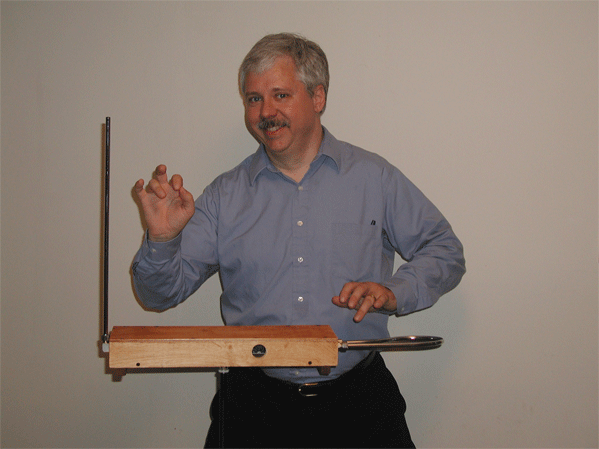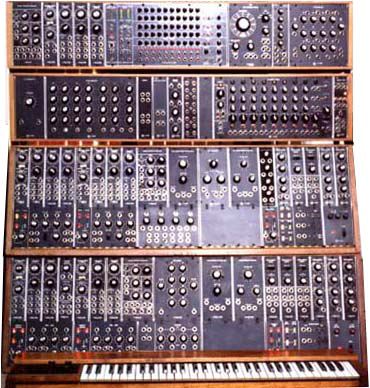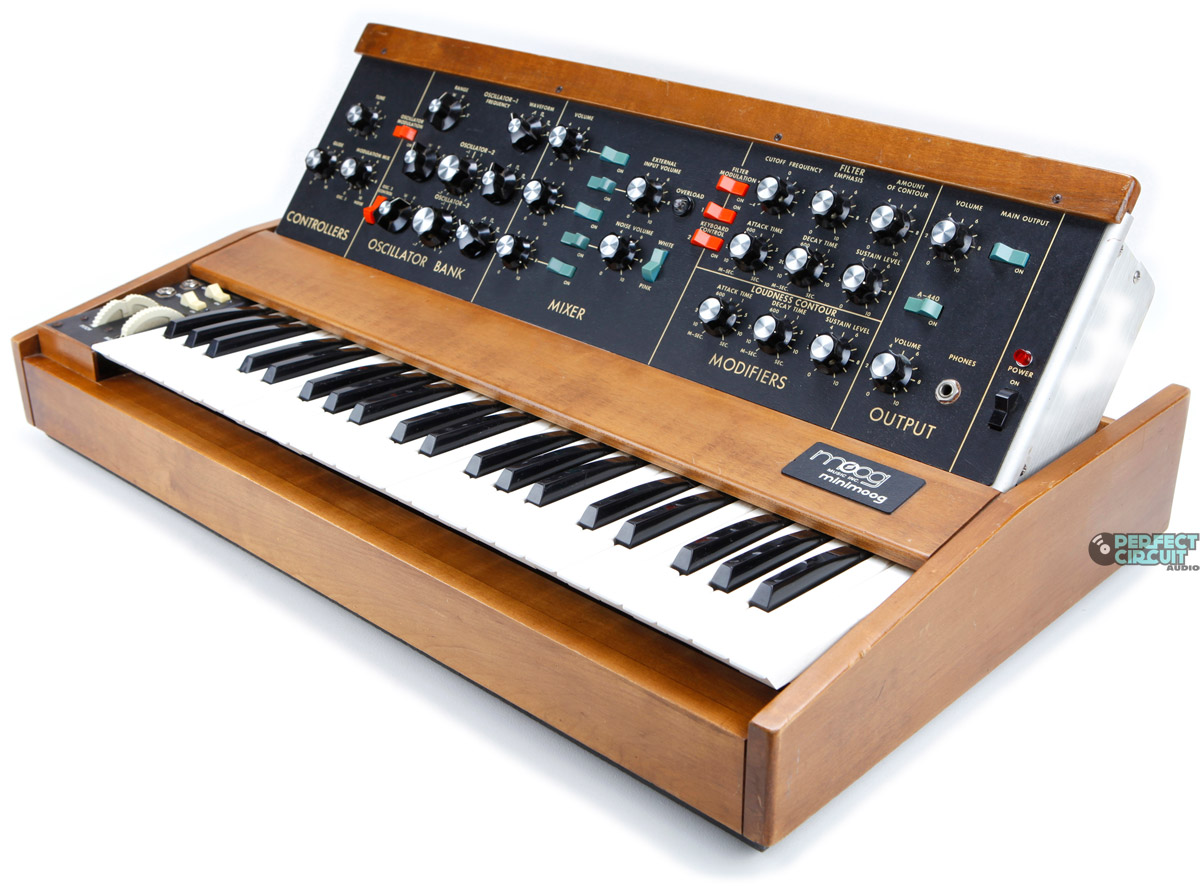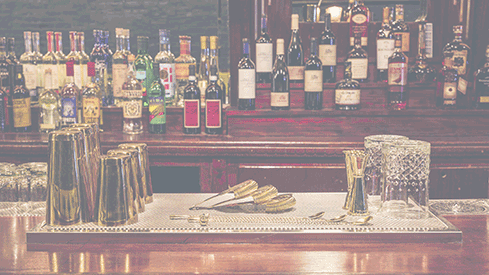
Who belongs on rock and roll’s Mt. Rushmore? A good argument can be made that Bob Moog (rhymes with “vogue”), inventor of the Moog synthesizer, deserves a spot right next to Leo Fender and Les Paul. Like the creations of those giants, Moog's invention transformed rock music. His analog synthesizers were affordable, versatile, portable, and produced a virtually unlimited range of powerful, rich sounds. They were also the first synthesizers to come equipped with a keyboard user interface.
Bob Moog was born in Queens NYC on this date in 1934. A self-described “nerd” he took classical piano lessons from his mother, and spent his spare time with his father, an electrical engineer, indulging their mutual interest in electronics. Bob graduated from Bronx High School of Science in 1952, got a B.S. in physics from Queens College in 1957, a B.S.E.E. from Columbia, and a Ph.D. in engineering physics from Cornell in 1965.

Apparently, playing a theremin causes weird facial expressions, as well as sounds.
Moog's interest in electronic musical instruments began in high school, when he built a theremin, an early instrument invented by Russia’s Leon Theremin in the 1920s, and most often associated with the eerie sounds heard in cheesy science fiction shows. A theremin is played by hovering the hands near two antennas, one a vertical rod controlling tone, and the other a horizontal loop controlling volume. Bob funded his college and graduate studies by selling theremin parts, kits and finished products. He formed the R.A. Moog Company in 1959, and after writing an article about his theremins for Electronics World magazine in 1961, received $50,000 in orders.
Synthesizers were developed in the early 20th century, but were experimental in nature. RCA built a synthesizer in 1955 that, like early computers, filled an entire room. It, too, was programmed using punchcards, and cost over $100,000. While at Columbia, Bob developed voltage controlled sound generators and sound manipulators. Basically, he discovered how to regulate volume, pitch, wave form, modulation, and other fundamentals of sound, by regulating the voltage put through solid state circuits he designed. In 1963, his work came to the attention of experimental composer Herb Deutsch, who was interested in electronic music. In his spare time, while working on his Ph.D. and making theremins, Moog began work on a synthesizer using his voltage controlled devices in modules that could be interconnected via patch cords to generate the desired sounds. The first Moog synthesizer was demonstrated in 1964, came equipped with a keyboard user interface for ease of use, and cost $4,000 – 11,000, depending on the number of modules purchased. Several recording studios placed orders. They were used primarily to create attention-getting sounds for advertising. A few rock groups used the synthesizer to incorporate novel sounds into songs, e.g. “Strange Days” by The Doors, “Reflections” by the Supremes.

One of Moog’s earliest customers was Walter (now Wendy) Carlos, an academic musician whose feedback and suggestions helped Moog refine his invention. Carlos’ 1968 album, Switched-On Bach, sold over a million copies and was the breakthrough that opened everyone’s eyes to the Moog’s potential. It wasn’t long before the Beatles were experimenting with the Moog on Abbey Road. Keith Emerson purchased a modular Moog in 1970, used it for the first time for the solo at the end of “Lucky Man” and schlepped that beast on tour.
 Keith Emerson and his Moog
Keith Emerson and his MoogWhen Moog introduced the Minimoog in 1970, it changed the face of pop and rock music forever. The Minimoog is a small, portable unit that eliminated the multiple modules and patch cords. Best of all, it was very affordable at $1,500. In 2000, the Minimoog Voyager made further improvements to the instrument, including one-button selection for several popular pre-set sound profiles. The Minimoog soon appeared on stage with Pink Floyd, Yes/Rick Wakeman, Stevie Wonder, Tangerine Dream, Donna Summer, Jan Hammer, Sun Ra, and countless others.

Synthesizers, like most things new and poorly understood, were controversial when they first came on the scene. Some musicians feared the instruments would render them obsolete. Those fears proved to be unfounded. Moog once said “I was never worried that synthesizers would replace musicians. First of all, you have to be a musician in order to make music with a synthesizer.” As transformative as the Moog synthesizer was, its inventor described his work modestly: “I'm an engineer. I see myself as a toolmaker and the musicians are my customers... They use my tools.”
